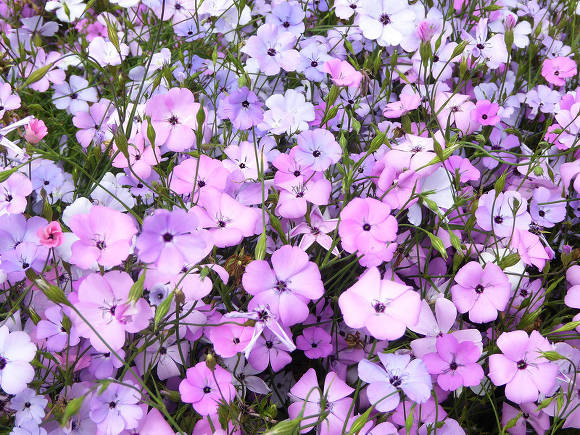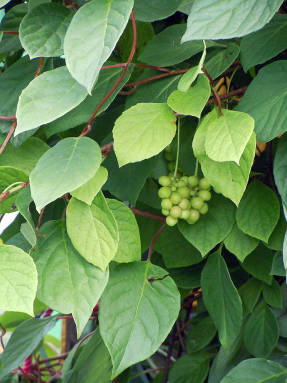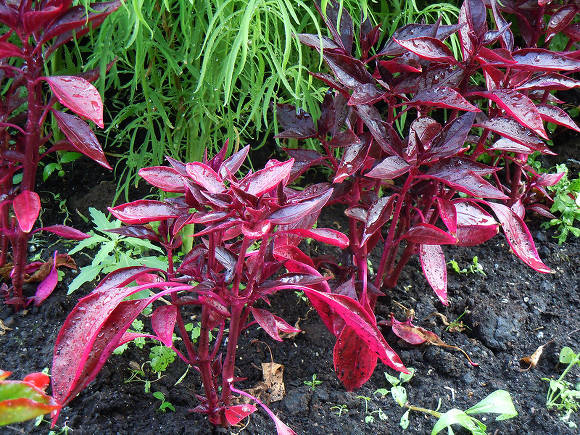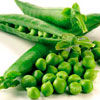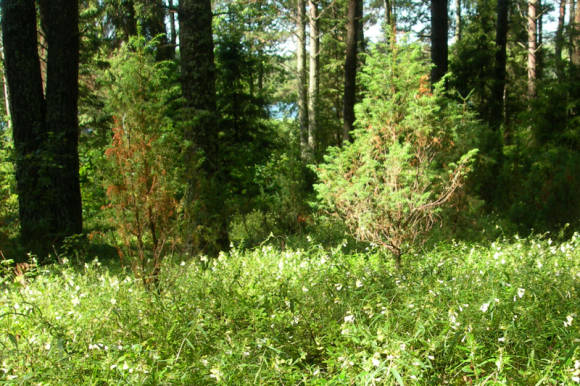 |
Many years ago they tried to grow this plant in the south of our country as a more productive replacement for the sandy immortelle. (Helichrysum arenarium)... But as often happens, something did not grow together. And in southern European countries and in northern Africa, it has been used for centuries as a perfume and spice plant, and, well, a little - as a medicinal plant. And the plant is really absolutely wonderful in every way.
Immortelle italian (Helichrysum italicum Rhot Guss.), synonym narrow-leaved immortelle (Helichrysum angustifolium subsp. italicum (Roth) Briq. & Cavill) is a perennial shrub from the Asteraceae family (Asteraceae). Young leaves are usually gray-gray, adults become almost white. Inflorescences are capitate, dense, slightly branched, collected in a shield at the top of the shoots. Baskets are barrel-shaped, large, 4-5 mm in diameter, spherical in the budding phase. Depending on the age, a fairly large number of flowering shoots can develop on one plant, and the number of baskets in total may exceed 300-400. The inflorescences are yellow and very fragrant, but the aroma is specific, reminiscent of the smell of curry. The plant blooms, depending on the place of growth and the origin of the sample, from May to August.
 |
It is found mainly in the Mediterranean: Algeria, Morocco, Greece, Cyprus, Albania, Montenegro, Italy, Slovenia, Croatia, Portugal and Spain. Considering such a wide and broken (disjunctive) area, there are many subspecies that differ significantly in appearance.
- So, in Corsica there is Helichrysum italicum subsp. italicum. It is he who has the greatest importance in aromatherapy and gives the essential oil of the best quality.
- Helichrysum italicum subsp. microphyllum (Willd.) Has shorter and smaller leaves (about 1 cm), and the bracts have external and internal glands on the veins.
- Helichrysum italicum subsp. serotinum (DC.) P. Fourn. has more oval heads and is distinguished by the absence of glands on achenes.
- In addition, botanists distinguish three more subspecies Helichrysum italicum subsp. pseudolitoreum (Fiori) Bacch. & al. , Helichrysum italicum subsp. siculum (Jord. & Fourr.) Galbany & al.
- And finally Helichrysum italicum subsp. picardii (Boiss. & Reut.) Franco.
Cultivation and reproduction
The Italian immortelle is propagated either by seeds or by cuttings, which are cut from annual shoots in the Mediterranean and rooted, planting before winter. In our case, propagation by seeds is more promising. It should be remembered that it is more thermophilic than our sandy immortelle and is capable of hibernating at temperatures slightly below -9оС. However, it can be grown in an annual crop.
Seeds germinate at temperatures above +10, and preferably + 15oC. They remain viable for about 1.5 years and, accordingly, their "freshness" is very important. Therefore, it is more advisable to grow it through seedlings, which can be sown in February - early March, then cut the plants into separate cassettes, and when the danger of frost has passed, plant them in the ground.
Plants are planted at a distance of 50-60 cm from each other and, when planting, they are buried so that the root collar is at a depth of 4-6 cm below the soil level. After planting, the shoots can be shortened slightly. Firstly, at first they will evaporate less moisture, and secondly, they will branch more and the bush will be more curly.
During the season, make one or two fertilizing with nitrogen-phosphorus fertilizers at the rate of 20-30 g / m2 when planting and ammonium nitrate - 10-15 g / m2. Care consists in loosening, fertilizing, watering.
 |
Medicinal and other uses
Now about how to use it, and most importantly, what. The plant has long been used to flavor drinks, as a spice in confectionery. It is a valuable medicinal plant.
The plant itself has traditionally been used in Mediterranean countries to fumigate animal quarters to kill infection and as a digestive aid.
As already mentioned, the strong smell of flowers resembles curry, but it does remind - it is more bitter and resinous. It is much closer to that of wormwood or sage. Therefore, the Italian immortelle is used quite widely in Mediterranean cuisine when stewing meat, fish or vegetable dishes. Young leaves - a spice for rice, sauces, meat, fish, fillings
This plant, as well as the sandy immortelle, is a good dried flower, and you can also make a bonsai relatively quickly from it.
The extracts obtained from the aboveground mass of the Italian immortelle contain vitamins: C (12.3-29.2 mg%); B1 (12.2-20.8 mg%); V2 - (62-110.3 mg%), K, free amino acids: lysine, arginine, threonine, deepolic acid, trace elements (copper, manganese, aluminum, molybdenum, etc.).
Quite a lot of research has been carried out and the great possibilities of this plant have been confirmed. The infusion of the plant has antioxidant, anti-inflammatory, antimicrobial and antiparasitic effects. Infusions and extracts from inflorescences are used for bronchial asthma, rheumatism, gastric diseases. A decoction of inflorescences has a choleretic effect, increases the amount of bile, dilutes it. Recommended for cholecystitis and other diseases.
The Italian immortelle is of great interest to French phlebologists (vein specialists). Ointments and extracts based on it help to improve the condition of the walls of blood vessels, reduce their permeability, and eliminate edema. But essential oil has found wider application in medicine.
Italian immortelle essential oil
The composition of the Italian immortelle essential oil is quite complex - it contains carboxylic acids and at least 27 different esters, which give the oil a unique aroma.
The composition of the oil depends on many factors: lighting, soil, temperature, climatic characteristics, growing height above sea level, geographical origin (North America, Italy, Greece) and the characteristics of processing and harvesting.
 |
Here is the approximate content of the main components in the essential oil: 14-54% neryl acetate (average 10.4%), 2-34% α-pinene (12.8%), 0-16% γ-curcumene, 0-17% β-selenene , 0-36% geraniol, 0-12% (E) -nerolidol, 0-11% β-caryophyllene, 9-25% linalool, 6-15% limonene, 2-methyl-cyclohexyl pentanoate (11.1%) , 1,7-di-epi-α-zedrene (6.8%), as well as in small amounts α-pinene and β-pinene, isovalenianaldehyde.
The oil is obtained by hydrodistillation from inflorescences and if leaves get into the raw material, the quality of the essential oil, as well as that of lavender, decreases. This is due to the fact that the essential oil of the leaves is significantly different in component composition. Usually fresh inflorescences are processed, immediately after harvesting. The content of essential oil, according to various sources, is from 0.3 to 1.5%, and 900-1500 g of essential oil can be obtained from one ton of high-oily raw materials. Its quality is highly dependent on the production technology and is not always maintained at the proper level. Often, fresh oil has a strong earthy odor and needs to settle. Every year oil becomes more and more in demand by both perfumers and aromatherapists, which leads to higher prices and frequent falsifications.
The essential oil is light, mobile, sometimes with a greenish tint and a characteristic warm spicy smell.
It has excellent wound healing properties. It is applied to damaged areas in case of dislocations, bruises, hematomas, and its action resembles arnica - edema passes, hematoma resolves, epithelialization occurs faster, and, most surprisingly, ugly scars do not form, which are often a problem and are eliminated in other ways, like cosmetic defects ... It arouses great interest in cosmetology as well - sometimes one or another company has cosmetic lines with an extract or essential oil of this plant.



